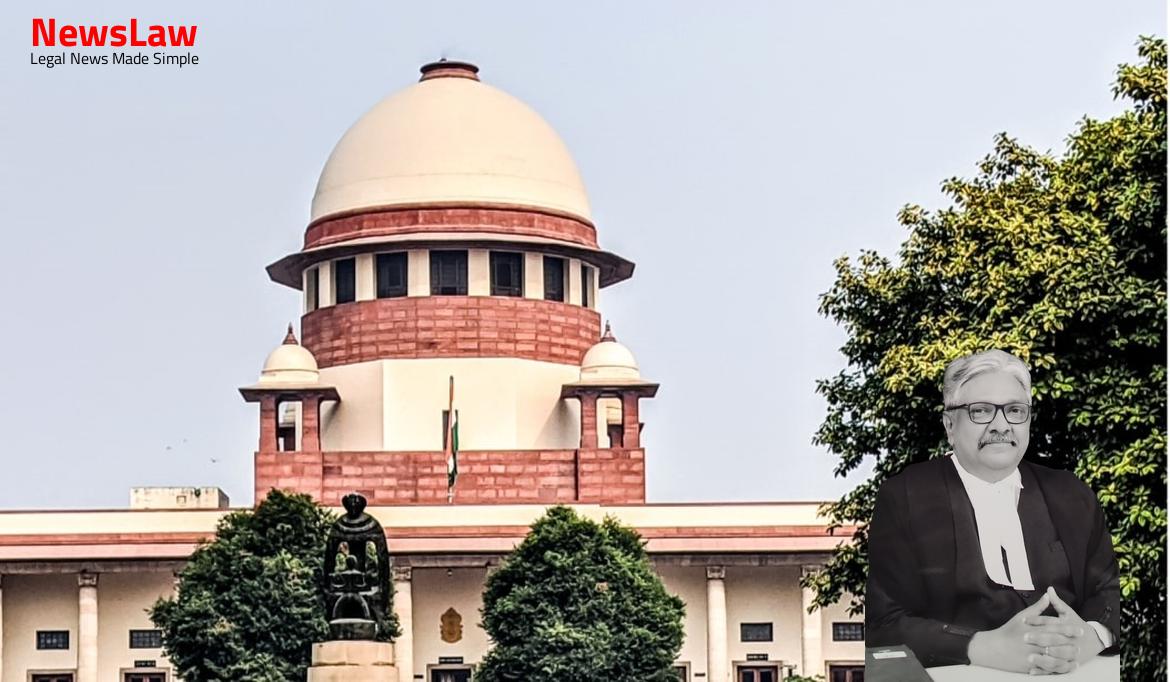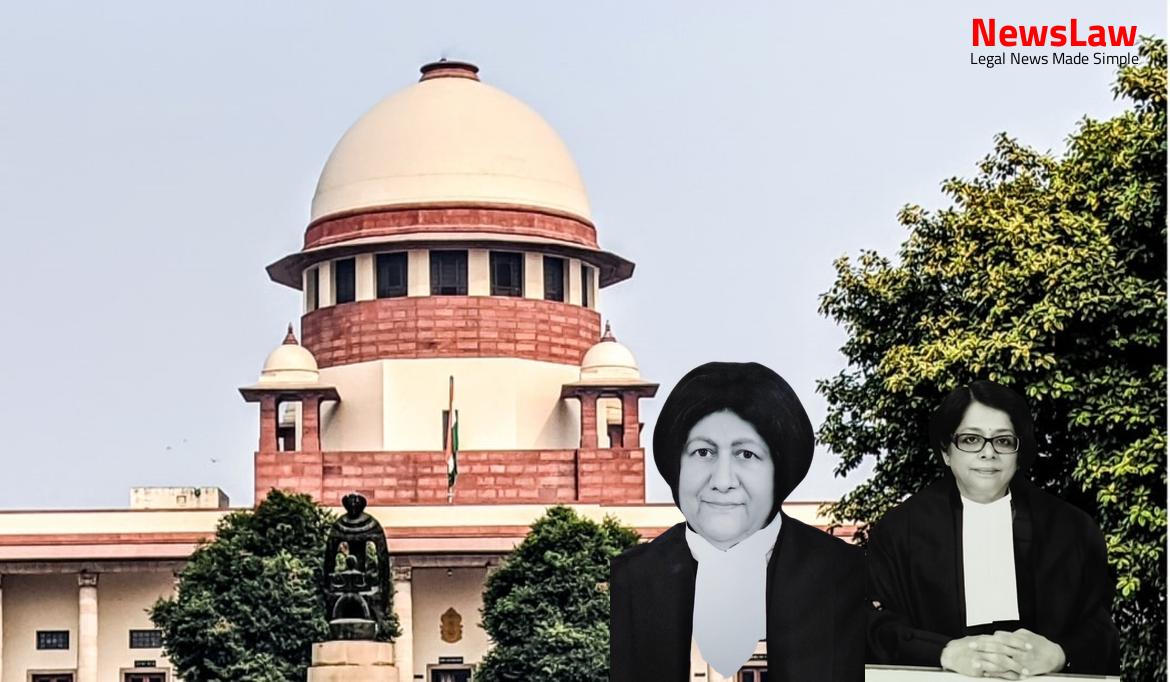In a significant legal case, the Supreme Court of India deliberated on the interpretation of legislation in Special Courts involving the Insolvency and Bankruptcy Board of India and Ramesh Satyanarayan Malu. The case raised crucial questions regarding the application of laws and the distinction between legislation by incorporation and legislation by reference. The judgment sheds light on the intricate nuances of legal interpretation in complex matters.
Facts
- The Sessions Judge issued process against the Respondents on complaint filed by the Insolvency and Bankruptcy Board of India.
- The NCLT found it appropriate to propose prosecution of the Respondents in a case involving a Financial Creditor.
- The NCLT admitted the Petition, initiated moratorium as per Section 14 of the Code, and directed statutory actions to be taken.
- The High Court allowed the petition of Satyanarayan Bankatlal Malu and Ramesh Satyanarayan Malu against the Sessions Judge’s order.
- The Appellant-Board lodged a Complaint against the Respondents for non-compliance of the terms of the OTS and failure to file M.A. 1396/2018 under Section 12A of the Code through the RP.
- Mr. Satyanarayan Malu, an Ex-Director of the Corporate Debtor, filed an application for withdrawal of the petition under Section 10 of the Code due to a One Time Settlement with Allahabad Bank.
- The NCLT issued a Show-Cause Notice against the Respondents for non-compliance of the terms of the OTS.
- NCLT appointed Mr. Amit Poddar as the Interim Resolution Professional to carry out the functions under the Code.
- The Corporate Debtor filed a petition for initiation of the Corporate Insolvency Resolution Process.
- The Respondents filed a Writ Petition before the High Court of Judicature at Bombay to challenge the order passed by the Sessions Judge.
- NCLT allowed the withdrawal of the petition by the sole Financial Creditor through a consent letter.
- The RP also filed an application for the approval of the Resolution Plan.
Arguments
- The ASG relied on various judgments of the Court to establish that the Code is a complete Code in itself.
- The ASG argued that the legislative intent is clear and that it is a ‘legislation by incorporation’ rather than ‘legislation by reference’.
- The Single Judge of the High Court was criticized for quashing the proceedings based on jurisdictional errors.
- The arguments presented by the ASG and the Advocate on Record highlighted the importance of specific references in statutes for legal interpretation.
- The ASG emphasized that subsequent amendments to the Companies Act should not affect the applicability of the Code.
- Legislative intent is clear regarding the offences punishable under the Code and their inclusion in Chapter XXVIII of the Companies Act, 2013.
- Argument that if the legislature intended to remove these offences from the Companies Act, it could have done so by amending the Code directly.
- Submission that the case does not amount to ‘legislation by incorporation’ but rather ‘legislation by reference’.
- Emphasis on the need for a thorough consideration of the merits of the case, which the Single Judge did not adequately address.
- Request for the matter to be remitted to the High Court for a fresh decision on merits.
Also Read: Understanding Legal Judgments: Ravishankar Tandon vs. State of Chhattisgarh – Conviction Reversed
Analysis
- Special Court under the Code as provided under Section 436 of the Companies Act before 2018 Amendment or after
- Determining if the reference in Section 236(1) of the Code is legislation by incorporation or reference
- If legislation by incorporation, subsequent amendments do not affect the Code
- Two classes of Special Courts in the 2018 Amendment – one presided by a single judge holding office as Session Judge or Additional Session Judge, the other by Metropolitan Magistrate or Judicial Magistrate of First Class
- Clear distinction in the types of Special Courts based on the severity of the offense under the Companies Act
- Analysis of the changes in the classes of Special Courts as per the original Act, 2015 Amendment, and 2018 Amendment
- Interpretation of Section 236(1) of the Code with the non-obstante clause
- Potential impact of the legislation being considered as either legislation by incorporation or by reference
- Section 435 of the Companies Act, 2013 originally required a person appointed as a Judge of a Special Court to be holding the office of a Sessions Judge or an Additional Sessions Judge immediately before such appointment.
- The 2015 Amendment to Section 435 specified that Special Courts for offences punishable under the Companies Act with imprisonment of two years or more would consist of a Single Judge who is a Sessions Judge or Additional Sessions Judge.
- Offences under the Companies Act punishable with imprisonment of less than two years would be tried by Metropolitan Magistrates or Judicial Magistrates of the First Class.
- The 2018 Amendment further clarified the composition of Special Courts and the appointment process of Judges under Section 435.
- Section 236(1) of the Code mandates that offences under the Code are to be tried by the Special Court established under Chapter XXVIII of the Companies Act, 2013.
- Distinction between ‘legislation by reference’ and ‘legislation by incorporation’ discussed.
- Bodily lifting of provisions from one enactment to another in case of incorporation explained.
- Relevance of decision of Privy Council in interpreting Section 23-A of the Foreign Exchange Regulation Act emphasized.
- Consequences of repeal in case of reference without incorporation as per Section 8(1) of the General Clauses Act highlighted.
- Importance of understanding the difference between mere reference and incorporation for legal interpretation discussed.
Also Read: UCO Bank v. Borrower: Dismissal of Writ Petition
Case Title: INSOLVENCY AND BANKRUPTCY BOARD OF INDIA Vs. SATYANARAYAN BANKATLAL MALU (2024 INSC 319)
Case Number: Crl.A. No.-003851-003851 / 2023



